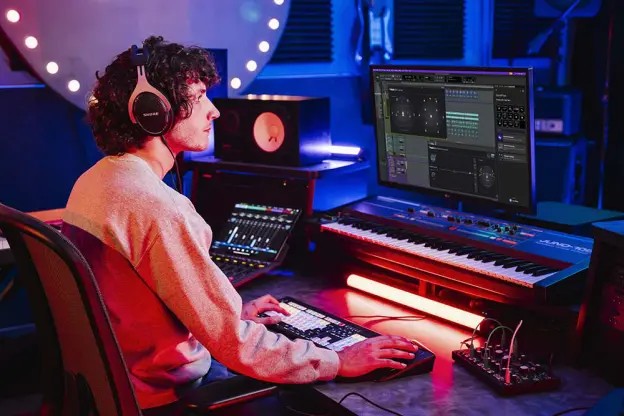The Unseen Revolution: AirPods as the Next Frontier in Interaction
For years, Apple’s AirPods have been the undisputed leaders in the wireless earbud market, celebrated for their seamless connectivity, high-fidelity audio, and iconic design. From the standard AirPods to the feature-rich AirPods Pro and the premium AirPods Max, they are primarily perceived as devices for consumption—listening to music, taking calls, and immersing oneself in content with features like Active Noise Cancellation. However, a quiet revolution is underway, transforming these audio accessories into powerful, active input devices. Buried within their sleek chassis is a suite of sophisticated motion sensors, including accelerometers and gyroscopes, that are beginning to unlock a new dimension of user interaction. This evolution signals a significant shift in the Apple ecosystem news, moving beyond touch and voice to embrace a future of intuitive, motion-based control. This article delves into the technology powering this change, explores the groundbreaking applications it enables, and analyzes its profound implications for the future of personal computing, from gaming and health to accessibility and the much-anticipated era of spatial computing heralded by recent Apple Vision Pro news.
The Sensor Technology Inside Your AirPods
The magic behind the emerging capabilities of AirPods lies not just in their audio drivers but in a complex interplay of sensors and custom silicon. While these components have been integral to features like Spatial Audio for some time, their full potential is only now being explored by the wider developer community. Understanding this underlying technology is key to appreciating the new wave of innovation we are beginning to witness in recent AirPods news.
Accelerometers and Gyroscopes: The Core of Motion Detection
At the heart of this technology are the precision motion sensors embedded in models like the AirPods Pro and AirPods Max. An accelerometer measures linear acceleration (the rate of change of velocity), allowing it to detect movement and orientation relative to gravity. A gyroscope measures angular velocity (the rate of rotation), enabling it to track tilt and rotational movement with high accuracy. Together, these sensors provide a detailed, real-time understanding of the user’s head position and movement. Their primary and most well-known application is Dynamic Head Tracking for Spatial Audio. When you’re watching a movie on your iPhone or iPad, this feature anchors the sound to the device, so as you turn your head, the audio environment remains fixed, creating a theater-like, immersive experience. This seamless integration is a cornerstone of recent iPhone news and iPad news, enhancing media consumption significantly.
The Role of the H1/H2 Chip and the CMHeadphoneMotionManager API
Raw sensor data is useless without powerful, low-latency processing. This is where Apple’s custom H1 and H2 chips come into play. These highly efficient Systems-in-a-Package (SiPs) process the data from the accelerometers and gyroscopes directly on the device, calculating the head’s attitude (pitch, roll, and yaw) hundreds of times per second. This onboard processing is crucial for minimizing latency, ensuring that interactions feel instantaneous and natural. To make this data accessible to developers, Apple provides the CMHeadphoneMotionManager API within its Core Motion framework. First introduced in iOS 14, this API is the gateway that allows third-party apps to securely request and receive head-motion data. The latest iOS updates news continues to refine this framework, giving developers more stable and powerful tools to build innovative experiences, all while respecting user privacy—a constant theme in Apple privacy news.
From Listening to Interacting: Emerging Use Cases

With the technological foundation in place, developers are beginning to imagine and build applications that transform AirPods from passive listening devices into active controllers. These use cases span entertainment, health, and accessibility, demonstrating the versatility of head-motion input and offering a glimpse into a more intuitive, hands-free future.
Immersive Gaming and Augmented Reality
The most immediate and exciting application is in gaming. Imagine a flight simulator where you pilot the aircraft simply by looking and tilting your head, or a racing game where you steer your vehicle by leaning into the turns. This creates a deeply intuitive and immersive experience that traditional touch or controller inputs cannot replicate. This form of control serves as a perfect primer for the world of augmented reality. As developers explore the latest Apple AR news, using AirPods for head-based aiming or navigation in AR apps becomes a natural extension. It’s a stepping stone toward the more complex interactions promised by devices like the Apple Vision Pro, where head, eye, and hand tracking will converge. Some might even see it as a simple, accessible alternative to a dedicated Vision Pro wand news-style controller for certain applications.
Health, Fitness, and Wellness
The implications for the health and wellness sector are profound, directly aligning with ongoing Apple health news. Physical therapists could prescribe and monitor neck mobility exercises, with an app using AirPods data to guide the user through movements and track their range of motion over time. In fitness apps, the sensors could provide real-time feedback on form, for instance, ensuring a user’s head is in a neutral position during a plank or yoga pose to prevent strain. Beyond physical fitness, mindfulness apps could use subtle head movements as a form of biofeedback, helping users focus and achieve a state of calm. This turns a device for listening to meditation guides into an active participant in the practice itself.
Accessibility and Hands-Free Control
Perhaps the most impactful application lies in accessibility. For individuals with limited motor skills, controlling a device can be a significant challenge. AirPods motion controls offer a powerful new method for hands-free interaction. A user could answer an incoming call with a simple nod, dismiss a notification with a shake of the head, or scroll through a webpage with gentle tilts. This could be a transformative feature integrated directly into the operating system, a frequent topic in iOS security news and accessibility updates. This extends beyond the iPhone; imagine navigating the Apple TV news interface or interacting with Siri news prompts on a HomePod mini without ever touching a remote or speaking a command. This level of integration across the Apple accessories news landscape is what makes the ecosystem so powerful.
Building for Motion: A Developer’s Guide
While the potential is immense, creating effective and enjoyable motion-based experiences requires a thoughtful approach. Developers must navigate a unique set of design challenges, from ensuring user comfort to managing battery life and respecting privacy.
Best Practices for Implementation

A successful motion-controlled app hinges on a few key principles. First is **calibration**: the app must establish a “neutral” or “center” point for the user’s head position to serve as a baseline for all movements. Second is **sensitivity tuning**: what feels responsive to one user may feel sluggish or overly sensitive to another. Providing adjustable sensitivity settings is crucial for user comfort and preventing motion sickness. Third, and most complex, is **intentionality**. Developers must design algorithms that can distinguish between a deliberate control gesture (like a head tilt to steer) and an unconscious, ambient movement (like nodding along to music). This often involves setting motion thresholds and analyzing the velocity and consistency of a movement. Finally, developers must be mindful of **battery impact**, as constant polling of the motion sensors can drain the batteries of both the AirPods and the connected iPhone or iPad. Efficiently managing when the app requests motion data is a critical optimization.
Common Pitfalls and Privacy Considerations
A common pitfall is making motion the *only* input method. This can exclude users or be impractical in certain situations, such as on a bumpy train ride. A well-designed app should always offer traditional touch controls as a fallback. Another challenge is context; a control scheme that works perfectly while a user is seated may be unusable while they are walking. On the privacy front, a major focus of all Apple privacy news, Apple has built strong protections into the API. Apps must explicitly request permission to access headphone motion data, and the user can revoke this permission at any time. The framework provides processed motion data, not raw sensor feeds or audio, ensuring that the user’s privacy is maintained, a core tenet of the Apple platform.
The Road Ahead: From AirPods to Ambient Computing
The emergence of AirPods as motion controllers is not an isolated trend but a key piece of Apple’s larger vision for an ambient, spatially aware computing future. It represents a significant step in how we interact with technology, moving it from our hands and screens into the environment around us.
/pcq/media/media_files/2025/09/10/apple-airpods-pro-3-2025-09-10-13-07-53.png)
The Legacy and Evolution of Personal Devices
This evolution mirrors the history of Apple’s personal devices. We’ve come a long way from the single-purpose devices that dominated early iPod news, such as the beloved iPod Classic news and iPod Nano news. The functionality of the entire iPod lineup—from the iPod Shuffle news to the iPod Mini news and later the iPod Touch news—has been absorbed and expanded upon by the iPhone. Now, we see peripherals like AirPods gaining their own complex, interactive capabilities. While discussions of an iPod revival news often surface due to nostalgia, the true successor to its spirit of personal, on-the-go technology lives on in these multi-functional, interconnected devices.
AirPods as a Key Accessory in the Spatial Era
With the launch of the Apple Vision Pro, the role of AirPods becomes even more critical. They are not just audio companions for the spatial computer but essential input and output peripherals. Future AirPods Pro news and AirPods Max news will likely focus on even more advanced sensors, tighter integration, and perhaps even haptic feedback. This synergy between devices is central to Apple’s strategy. An Apple Watch provides wrist and arm motion data, an iPhone provides location and touch input, and AirPods provide head motion data. Combined with the eye and hand tracking of the Vision Pro, developers will have an unprecedented toolkit to create deeply immersive experiences. This ecosystem of interconnected sensors, including data from devices like an AirTag news or inputs from an Apple Pencil news, will form the backbone of the next computing platform.
Conclusion: The Sound of a New Interface
The latest AirPods news is about more than just audio quality or battery life; it’s about a fundamental re-imagining of what a personal audio device can be. By unlocking the motion sensors within AirPods, Apple and its developer community are turning them into intuitive, powerful controllers for a new generation of applications. From making games more immersive to providing life-changing accessibility features and enhancing fitness routines, the potential is only just beginning to be tapped. This evolution is a clear signal of Apple’s long-term vision: a future where technology seamlessly integrates into our lives, responding not just to our touch and voice, but to our very movement. AirPods are no longer just for listening; they are becoming a key part of how we will interact with the digital world around us.











